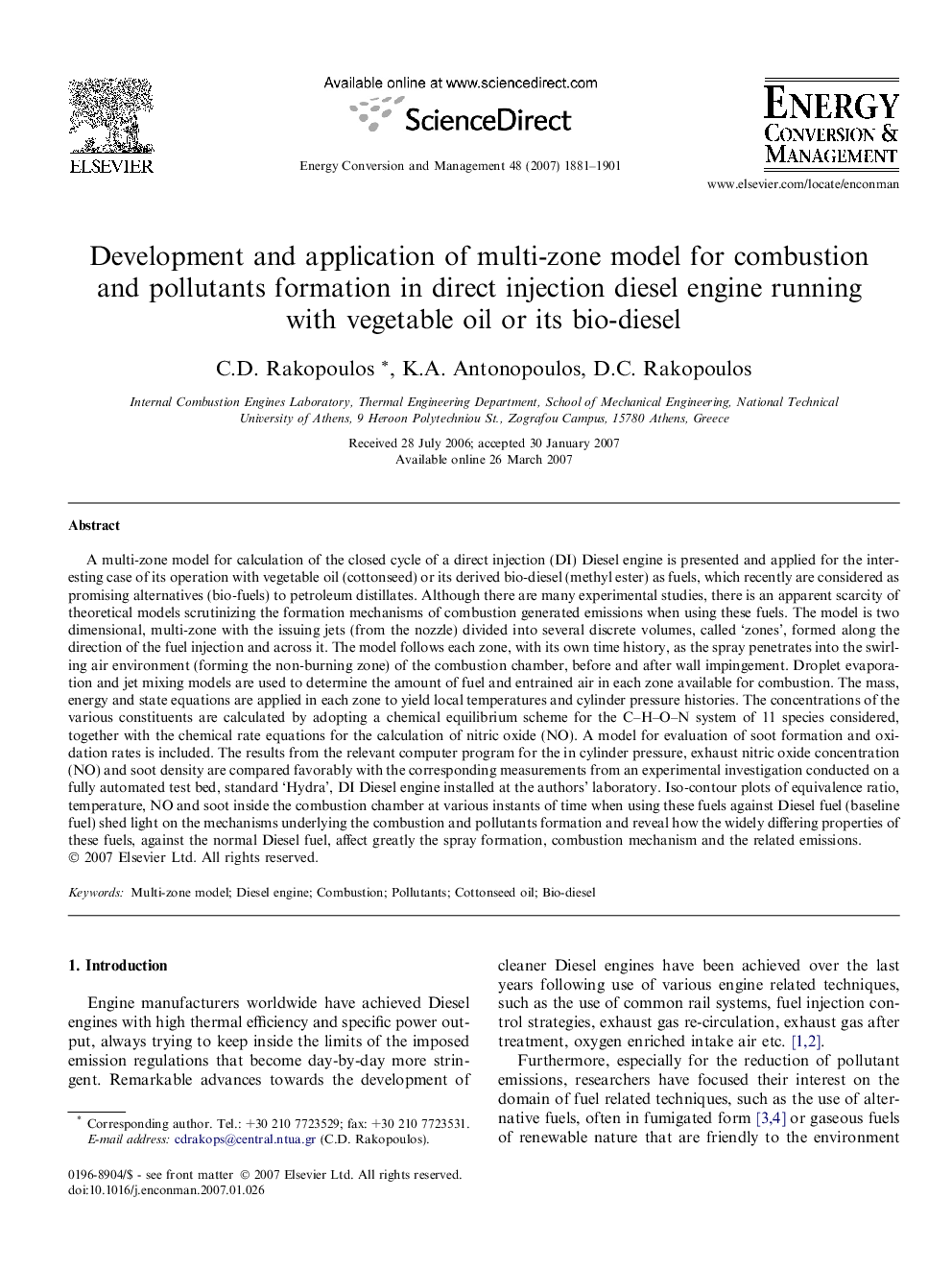| کد مقاله | کد نشریه | سال انتشار | مقاله انگلیسی | نسخه تمام متن |
|---|---|---|---|---|
| 772961 | 897767 | 2007 | 21 صفحه PDF | دانلود رایگان |

A multi-zone model for calculation of the closed cycle of a direct injection (DI) Diesel engine is presented and applied for the interesting case of its operation with vegetable oil (cottonseed) or its derived bio-diesel (methyl ester) as fuels, which recently are considered as promising alternatives (bio-fuels) to petroleum distillates. Although there are many experimental studies, there is an apparent scarcity of theoretical models scrutinizing the formation mechanisms of combustion generated emissions when using these fuels. The model is two dimensional, multi-zone with the issuing jets (from the nozzle) divided into several discrete volumes, called ‘zones’, formed along the direction of the fuel injection and across it. The model follows each zone, with its own time history, as the spray penetrates into the swirling air environment (forming the non-burning zone) of the combustion chamber, before and after wall impingement. Droplet evaporation and jet mixing models are used to determine the amount of fuel and entrained air in each zone available for combustion. The mass, energy and state equations are applied in each zone to yield local temperatures and cylinder pressure histories. The concentrations of the various constituents are calculated by adopting a chemical equilibrium scheme for the C–H–O–N system of 11 species considered, together with the chemical rate equations for the calculation of nitric oxide (NO). A model for evaluation of soot formation and oxidation rates is included. The results from the relevant computer program for the in cylinder pressure, exhaust nitric oxide concentration (NO) and soot density are compared favorably with the corresponding measurements from an experimental investigation conducted on a fully automated test bed, standard ‘Hydra’, DI Diesel engine installed at the authors’ laboratory. Iso-contour plots of equivalence ratio, temperature, NO and soot inside the combustion chamber at various instants of time when using these fuels against Diesel fuel (baseline fuel) shed light on the mechanisms underlying the combustion and pollutants formation and reveal how the widely differing properties of these fuels, against the normal Diesel fuel, affect greatly the spray formation, combustion mechanism and the related emissions.
Journal: Energy Conversion and Management - Volume 48, Issue 7, July 2007, Pages 1881–1901